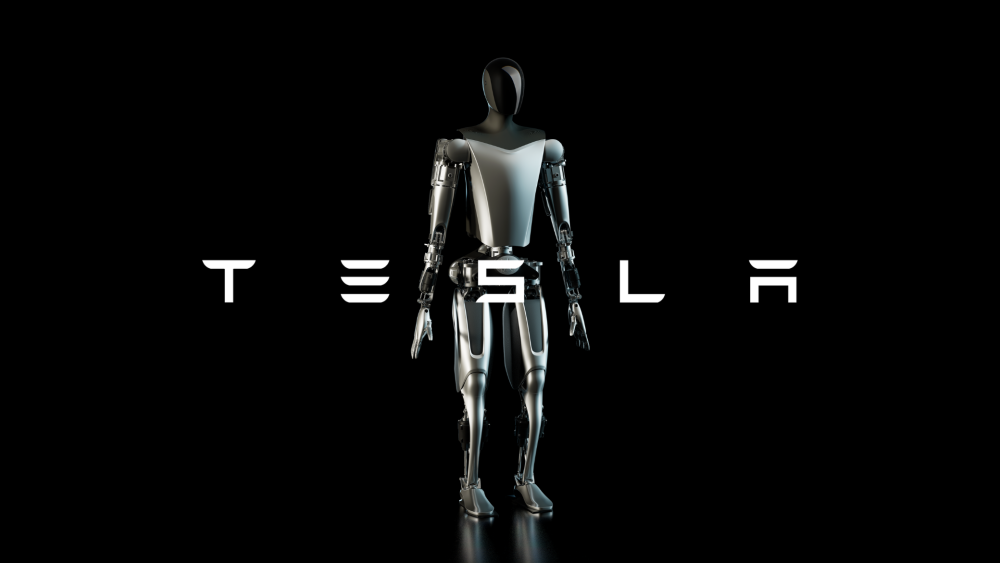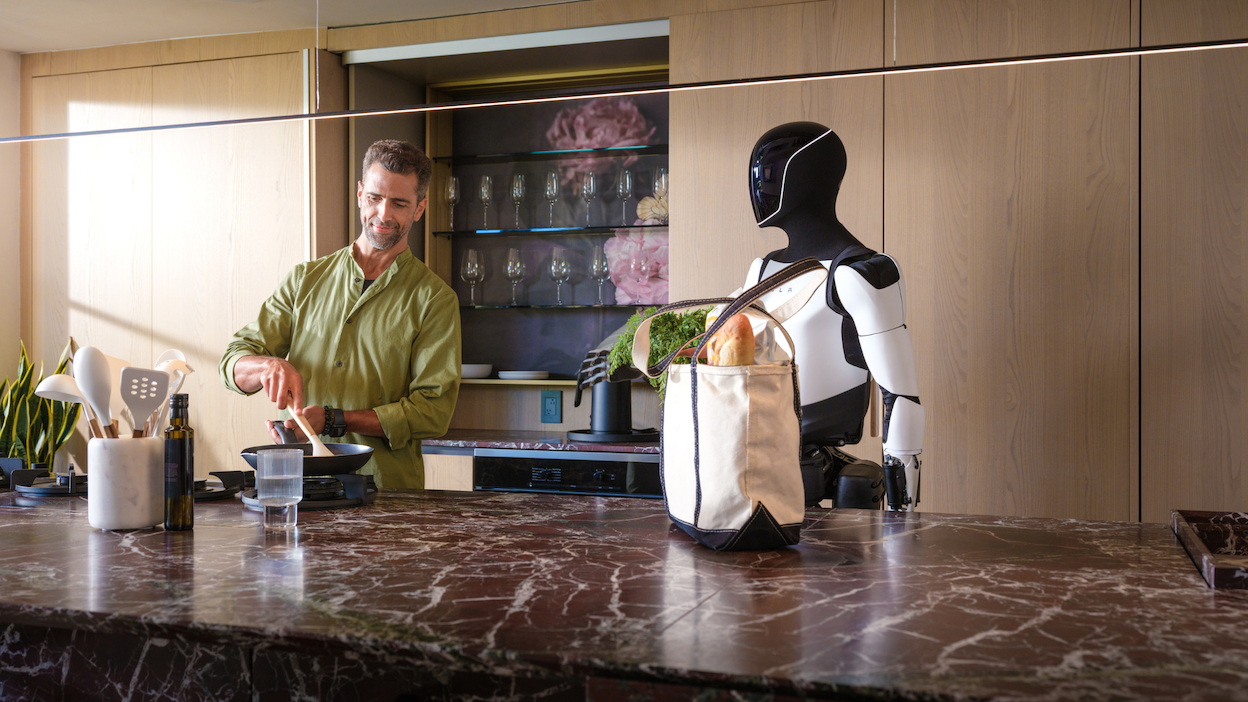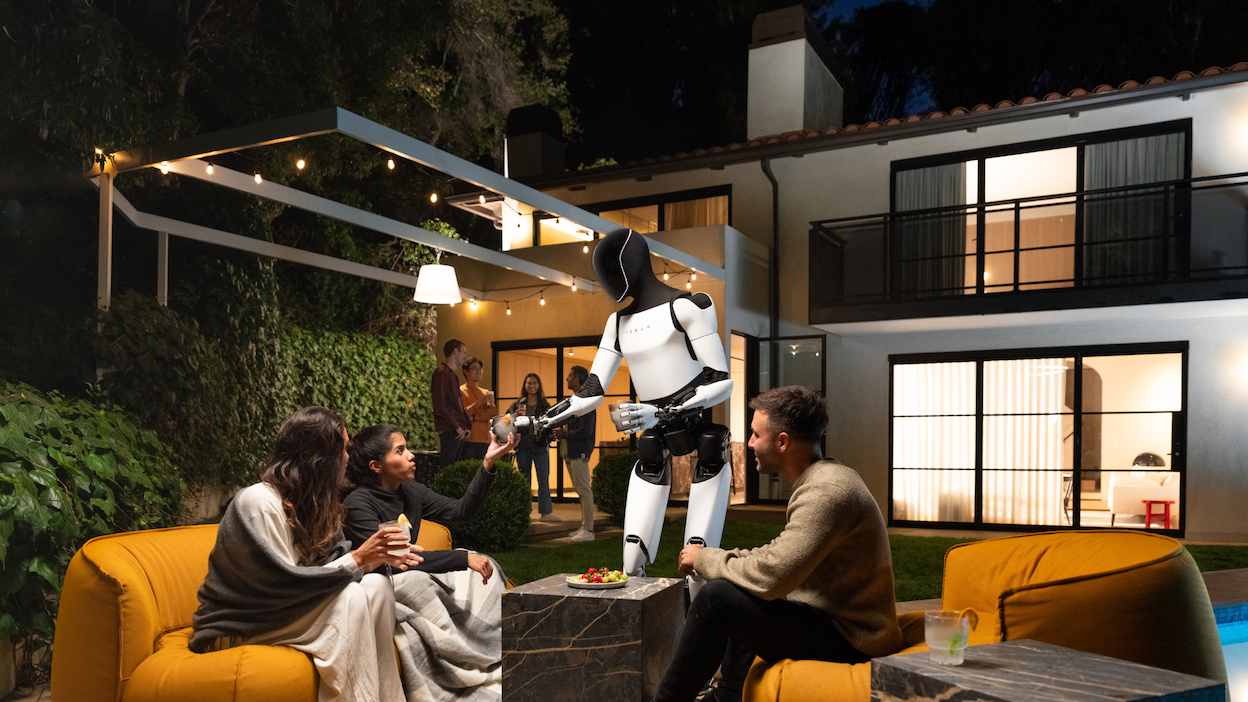
October 2024.
Tesla Optimus is a humanoid robot developed by Tesla with the aim of revolutionizing automation and assisting with a variety of tasks both in homes and industrial environments. Officially unveiled at Tesla’s "We, Robot" event, Optimus, also known as the Tesla Bot, is designed to handle repetitive tasks and perform functions that could replace or support human labor in many scenarios.
What Can Tesla Optimus Do?
Optimus is built to take over routine tasks such as carrying objects, organizing items, and even potentially assisting with household chores like cleaning or package delivery. According to Elon Musk, Optimus "will basically do anything you want. It can be a teacher, babysit your kids, walk your dog, mow your lawn, get the groceries, just be your friend, serve drinks, whatever you can think of, it will do".

Its development has been largely driven by the same technologies behind Tesla’s autonomous driving system, including neural networks and AI. Optimus is equipped with Tesla-designed actuators and sensors, which allow it to mimic human-like movements with improved balance and agility. In demonstrations, Optimus has shown its ability to walk, squat, and balance itself, all key features necessary for it to operate effectively in dynamic environments.
Key features of the robot include:
Mobility: Designed to walk at speeds up to 5 mph (8 km/h), Optimus possesses human-like agility and balance, enabling it to navigate complex environments.
Strength: Capable of carrying up to 45 pounds (20 kg) and deadlifting up to 150 pounds (68 kg), it is suitable for tasks requiring moderate strength.
Dexterity: Equipped with advanced hands featuring 11 degrees of freedom, Optimus can manipulate objects of various shapes and sizes, handling both delicate tasks and heavier lifting.

How Much Does Tesla Optimus Cost?
The exact price of Tesla Optimus hasn’t been firmly established as it is still under development, but Elon Musk has suggested that it will cost between $20,000 and $30,000. This pricing would position Optimus as a relatively affordable option compared to other robotics solutions, especially given its capabilities and the potential for wide-scale use. Over the long term, Tesla aims to mass-produce Optimus, which could drive prices down even further as production ramps up. This makes it an appealing proposition for businesses looking to automate operations without a massive upfront cost.
In terms of long-term costs, Optimus will likely require periodic maintenance and software updates, similar to Tesla’s electric vehicles. However, one of the main selling points is its low power consumption—Optimus uses only about 100 watts when sitting idle and around 500 watts while in motion, which is comparable to the energy usage of high-end PCs. This suggests that operating Optimus over time should be energy-efficient and cost-effective.
Short-Term vs. Long-Term Costs
In the short term, the main cost of Optimus will be the purchase price, estimated to be between $20,000 and $30,000. Businesses or individuals purchasing Optimus will also need to consider the infrastructure to support the robot, such as a reliable Wi-Fi or LTE network for connectivity, given that it will depend on these to receive updates and improvements over time.
In the long term, the operational costs of maintaining Optimus should be relatively low, thanks to its energy efficiency and Tesla’s approach to hardware-software integration. Much like Tesla cars, Optimus will likely receive regular software updates, which could extend its capabilities without requiring new hardware investments.
Tesla's Vision for Optimus
Tesla sees Optimus as a pivotal product that could fundamentally change economic productivity. Elon Musk has expressed his belief that Optimus could transform industries ranging from manufacturing to logistics and even household maintenance. In fact, Musk has stated that Optimus may one day be responsible for a significant portion of Tesla’s value due to its potential to increase global economic output significantly. The company is already planning to use Optimus in its own factories to assess and refine its capabilities before making it widely available.
Musk has also predicted that the demand for Optimus could be immense, envisioning a future where millions of these robots are produced and deployed globally. While the first generation of Optimus is expected to focus on more basic tasks, future iterations could expand into more sophisticated roles, including care assistance, security, and even companionship.
Optimus Still in Development
Keep in mind that the robot is still in the developmental stage. While demonstrations of the current prototypes show promise, Optimus has not yet reached mass production, and its full range of capabilities will continue to evolve as Tesla refines both the hardware and the AI systems powering it.
If you are considering purchasing Optimus for either personal or business use, consider monitoring Tesla’s updates as the product moves closer to commercial release, which is tentatively set for 2026. Given its pricing, potential capabilities, and Tesla’s track record of innovation, Optimus could represent a significant leap in the practical application of robotics.
Conclusion
In summary, Tesla Optimus is poised to become a game-changer in both consumer and industrial settings, with its blend of advanced AI, humanoid functionality, and affordability. While much of its future potential remains to be fully realized, the robot’s trajectory points to a future where tasks that once required human hands may soon be handled by machines.